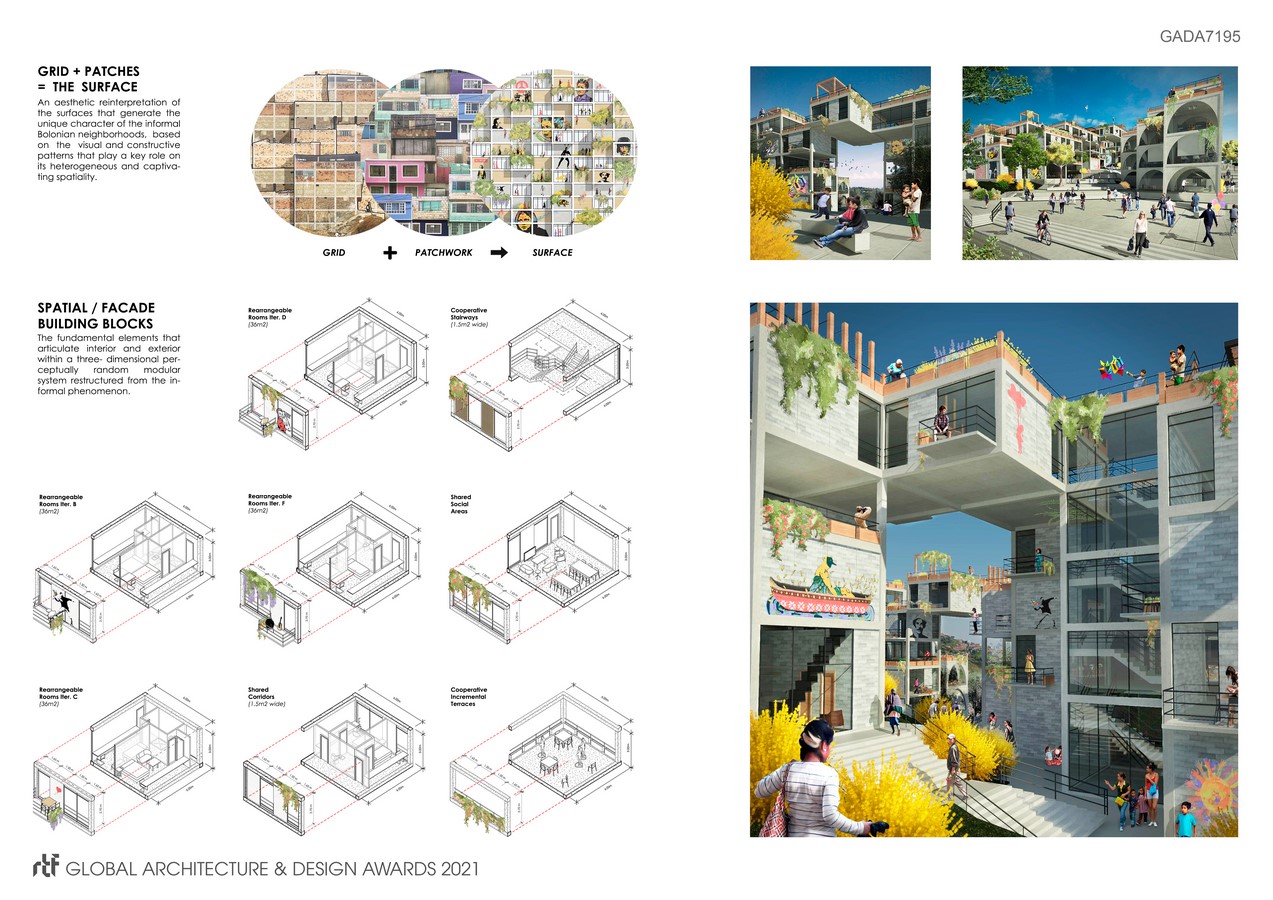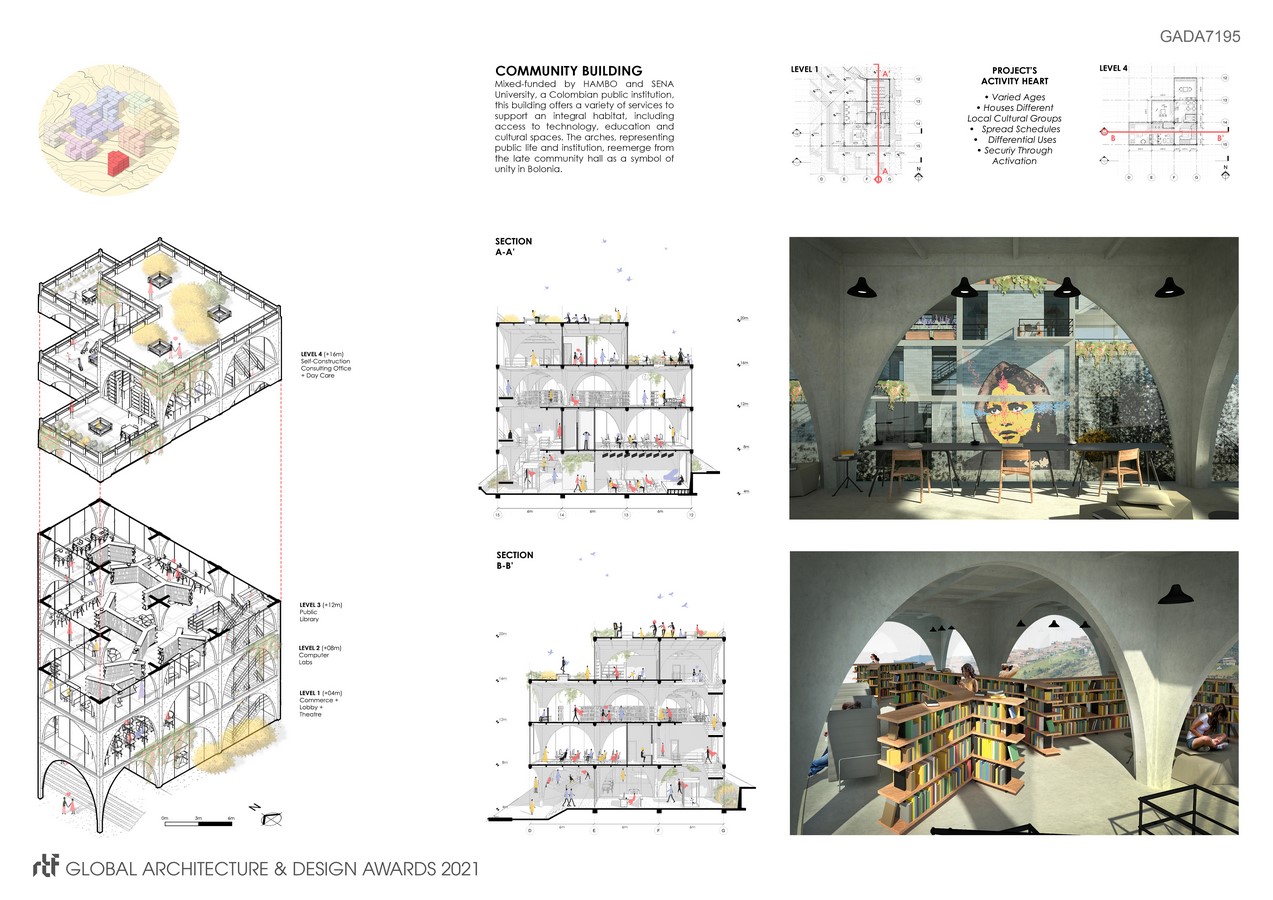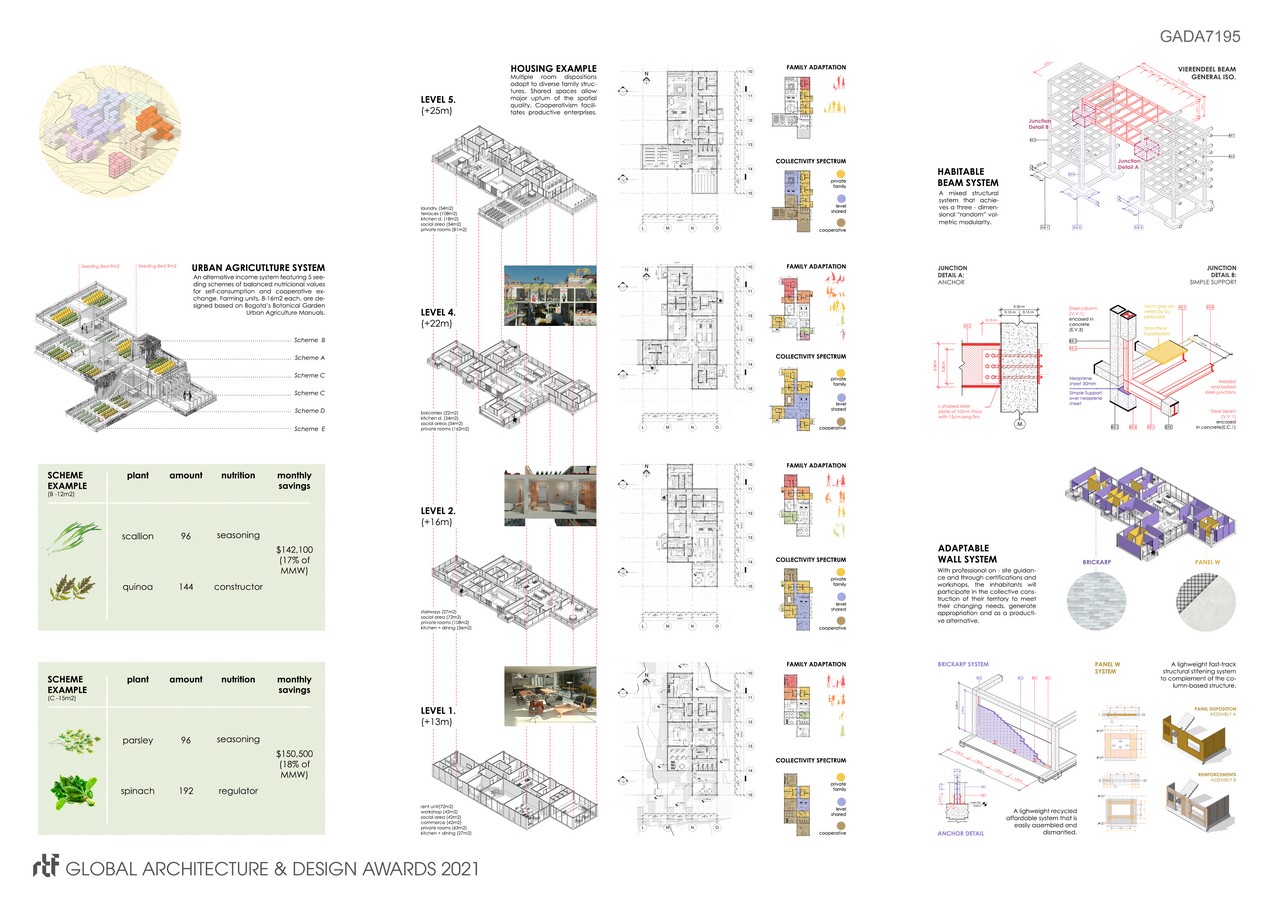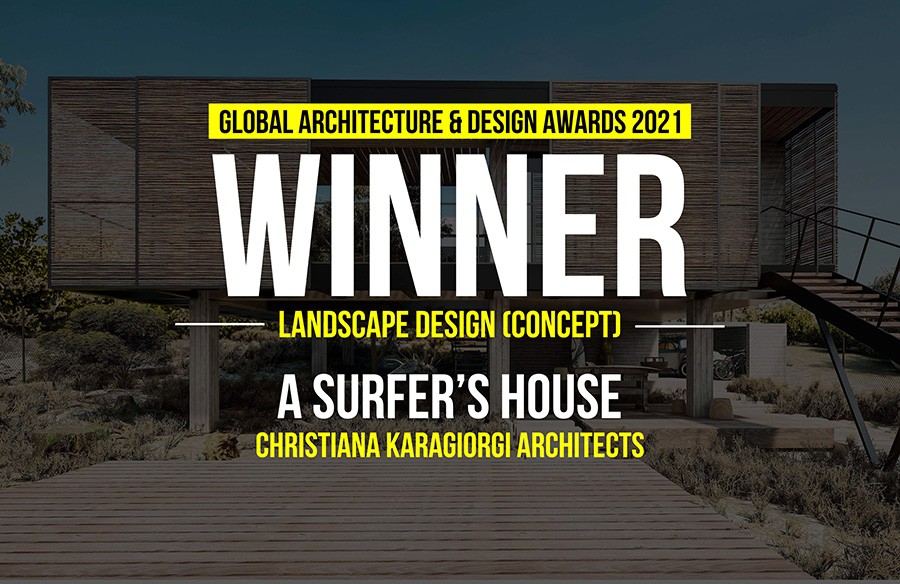Tribute: HAMBO is wholeheartedly dedicated to the inhabitants of Bolonia, who decisively contributed to its development through participative design and who’s struggles and friendship profoundly inspired the project’s authors. In their honor, this project seeks to raise awareness of the urgency to re-think the future of habitational solutions for vulnerable populations worldwide.
Global Design & Architecture Design Awards 2021
First Award | Category: Design Student | Residential Design
Project Name: HAMBO. Bolonia’s Multidimensional Habitation.
Project Designer: Sergio Eduardo Mutis.
Area: 15,000m2
Year: 2018
Location: Bogotá, Colombia.
University: Pontificia Universidad Javeriana
University Location: Bogotá, Colombia.
Faculty Thesis Director: Hernando Carvajalino Bayona

In Colombia, as in many other developing countries, rural violence and lack of opportunities generate massive migrations into the cities. Most migrants settle in marginal areas where both informal and formal alternatives display deficiencies on multiple habitational attributes. This situation exacerbates their social vulnerability, rendering it impossible to overcome in a degenerative cycle that demands an integral habitational alternative.
Within such complexity, it is alarmingly ironic how the social-vulnerability national housing policy is structured almost exclusively in simple monetary caps. After all, that simple approach is undoubtedly what triggers incomplete and monotonous answers, failing for their self-elected ignorance. Therefore, this project proposes a review of Complexity Theory and its integral reassessment of habitat: multidimensional habitat.
Consequently, the problem is addressed by projecting, site-specifically, a novel multidimensional habitat alternative for vulnerable population utilizing replicable strategies that can influence the rest of the supply and contribute indirectly to the broad overcoming of the problem. HAMBO is, henceforth, a cross-scalar transdisciplinary complex strategy system tailored-made for its unique territory.
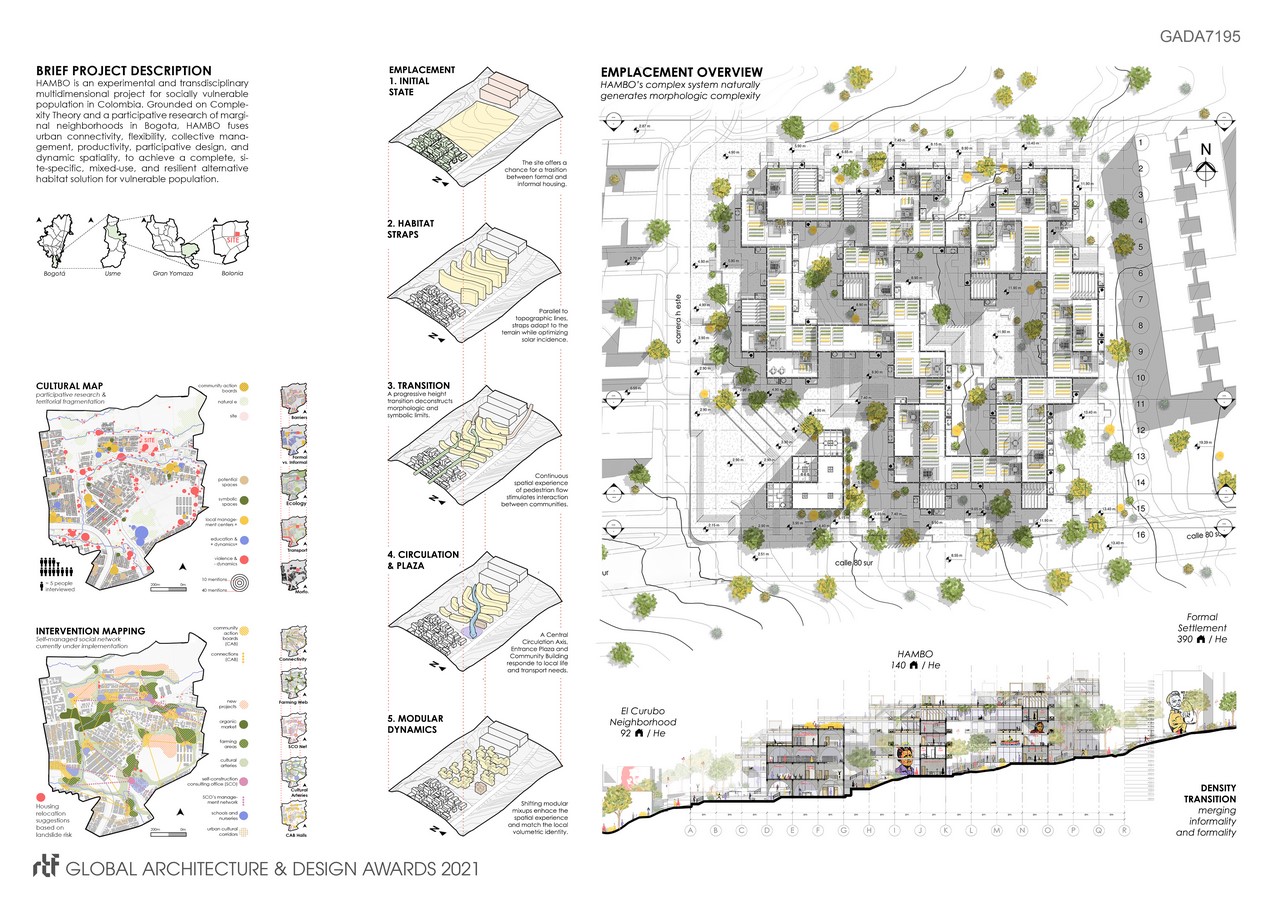
Due to the correlation of diverse habitational deficiencies, the marginal sector Bolonia in Bogota was selected to host the project. The 3 year-long participative territorial research, which featured 8 research tools and 91 diverse informants, demonstrated an alarming territorial fragmentation intensifying the previously addressed problem.
In thorough response, HAMBO was designed interrelating 36 strategies arranged in the following transdisciplinary categories: Urban Connectivity, Architectural Flexibility, Collective Management, Urban Productivity, Participative Design, and Dynamic Spatiality.
On an urban scale, Urban Connectivity intends primarily to mitigate territorial fragmentation through 6 self-managed social initiatives co-designed with local activist and communities. Currently under execution, the Self-Construction Consulting Network will associate professionals, students, and inhabitants, creating a knowledgeable community around the additive phenomenon of popular settlements, structural security, and income alternatives.

On the neighborhood scale, 4 cross-category emplacement strategies mitigate fragmentation and other crucial habitational issues, like the Height and Grid Transition Strategy that deconstructs symbolic and physical barriers, promoting encounter and territorial continuity.
Finally, on the architectural scale, HAMBO operates 24 wide-ranging strategies. Within the Collective Management category, the Collective Housing Strategy drastically improves access to larger area and higher spatial quality via cooperative space sharing. Then, Architectural Flexibility responds to the changing family structures and needs, featuring the prominent Adaptable Wall System. Additionally, the Urban Productivity category focuses on financial viability and alternative income approaches, like, for instance, the self-consumption, food security, and community exchange system of the Urban Agriculture Strategy. In turn, Participative Design brings forth graffiti, gardening and self-construction workshops and certificate courses, generating appropriation and exploiting Bolonia’s rich aesthetic legacy. Finally, the Dynamic Spatiality category centers on the generation of the vibrant spatial and aesthetic experience of popular settlements.
It is essential to understand this strategies, not as isolated elements, but as a one organically interwoven cross-scalar system. In the end, the resilience of the whole is what generates a promising groundbreaking solution for the unfair and degenerative habitational deficit faced by vulnerable populations in developing countries worldwide.


